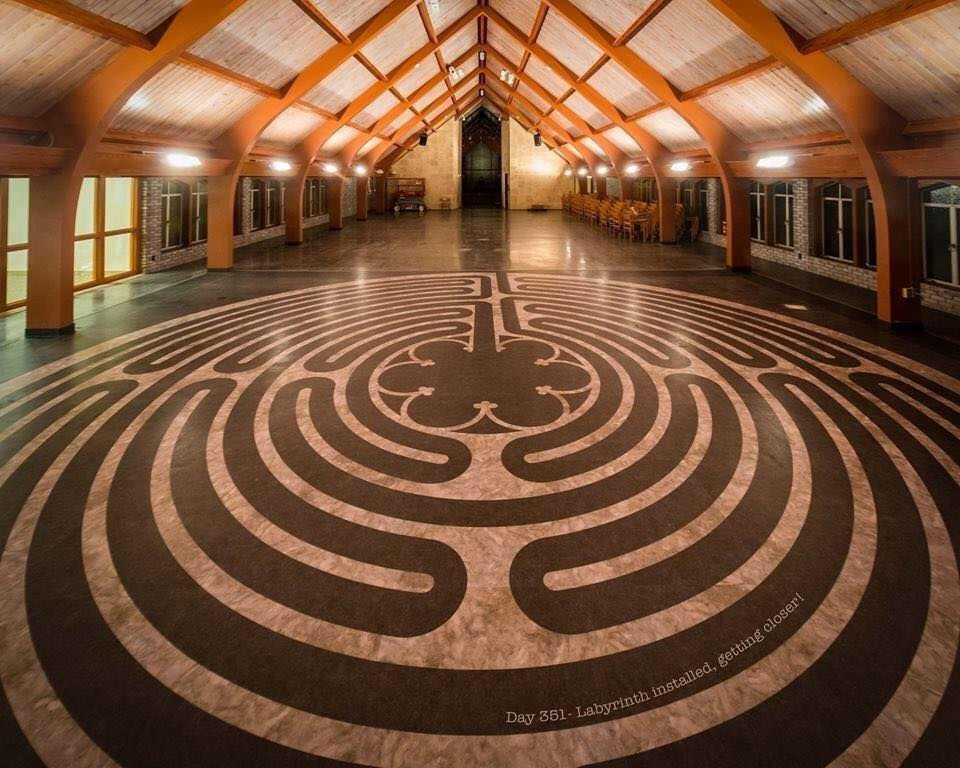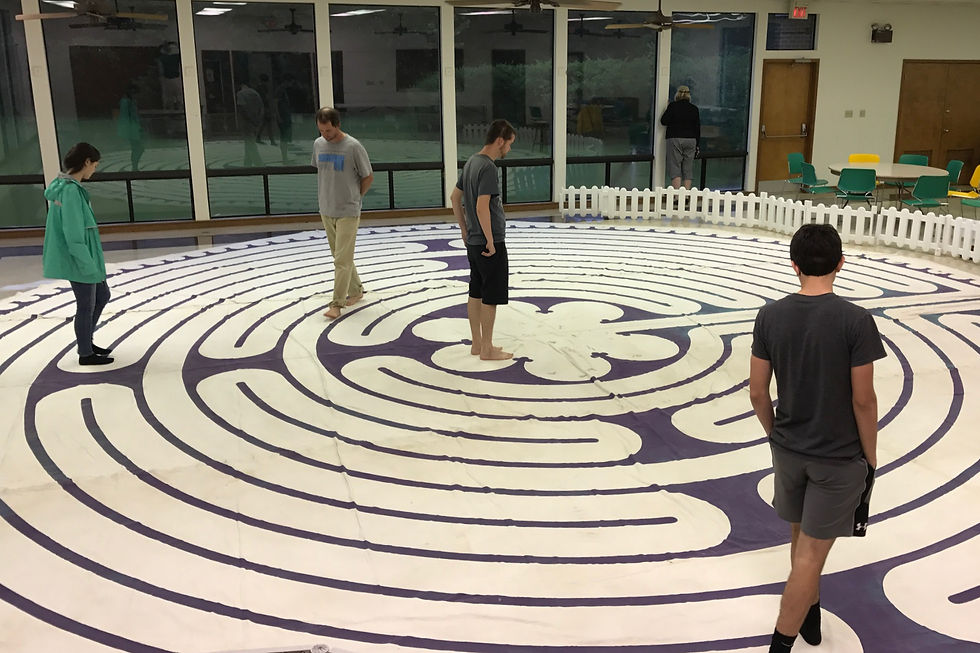Labyrinth Walks
- Post
- May 28
- 3 min read
By The Rev. Eric Zubler

Throughout the many weeks of Lent and into Holy Week, I have spent increasing time with labyrinths—particularly our diocesan labyrinth, a canvas reproduction of the eleven-circuit Chartres Cathedral labyrinth. At Trinity in Mobile, we explored this sacred tool in a variety of ways: indoors and outdoors, with music and in silence, and even in conjunction with the Stations of the Cross each Wednesday in Lent. Together, we experienced both fellowship and formation as we came to understand what makes a labyrinth a liminal space—a sacred “thin place” where heaven and earth meet.

People walk labyrinths for many reasons. Some walk simply to open their minds to God through the rhythm and movement of their bodies. Others walk to release the burdens of heartache and the pain life brings. Still others walk out of curiosity, drawn by the mystery of the path itself.
Labyrinths have a long history in Christian tradition. During the Middle Ages, when pilgrimage to the Holy Land became dangerous due to the Crusades, labyrinths in European cathedrals—most notably in France—offered a symbolic pilgrimage alternative. Pilgrims would walk the labyrinth as a sacred journey, often barefoot and in prayer.
Today, pilgrims still journey to Chartres Cathedral in France, where the most intact medieval labyrinth remains set into the nave. If you ever visit, go on a Friday, when the chairs are removed and walking is encouraged. On other days, the cathedral's outdoor labyrinth—installed about 25 years ago—is available by request.

Fortunately, labyrinths in our own diocese are much more accessible. At last count, seven parishes offer permanent labyrinths—some indoors, most outdoors. Our diocesan labyrinth, painted on white canvas, has traveled widely throughout the region, including a public installation on Election Day last year. It fits beautifully on the pine floors of Resurrection Chapel at Camp Beckwith, in large parish halls, and in open park-like spaces.

In many ways, our diocesan labyrinth has become like an old friend, beloved and familiar. We’ve worn it in with our footsteps, baptized it with our tears, and marked it with candle wax. It has become a sacred space, a refuge for those seeking deeper connection with God. In fact, one might describe our labyrinth in the words of a familiar Episcopal analogy for the sacraments: “an outward and visible sign of an inward and spiritual grace.”
At one point, I mentioned the need to clean the labyrinth. An acclaimed artist at Trinity responded, “The stains are what make it unique—they humanize the sacred geometry.” His words stopped me in my tracks. I had intended to flip it over and power-wash it after Easter. But his perspective—and the lack of practical guidance on cleaning a canvas labyrinth—made me pause. The marks on our labyrinth are not blemishes. They are a visible testament to our shared journey. They represent our collective humanity, etched into the fabric of sacred space.

So the next time I unroll the three large knapsacks that hold the labyrinth, I hope to see even more evidence of humanity’s offering to God—more footprints, more tears, more sacred encounters. I hope more of you will take this opportunity to make your own pilgrimage, your own symbolic “walk to Jerusalem,” in search of the Risen Christ.
Please use our labyrinths with reverence, knowing that sacred things happen there. But also remember: this is where our footprints meet God’s footprints, our tears mingle with God’s tears. God is truly with us in the liminal space of the labyrinth.
The diocesan portable canvas Chartres labyrinth, measuring 32 ft in diameter, is available for reservation for use. Contact jenn@diocgc.org.
.png)



